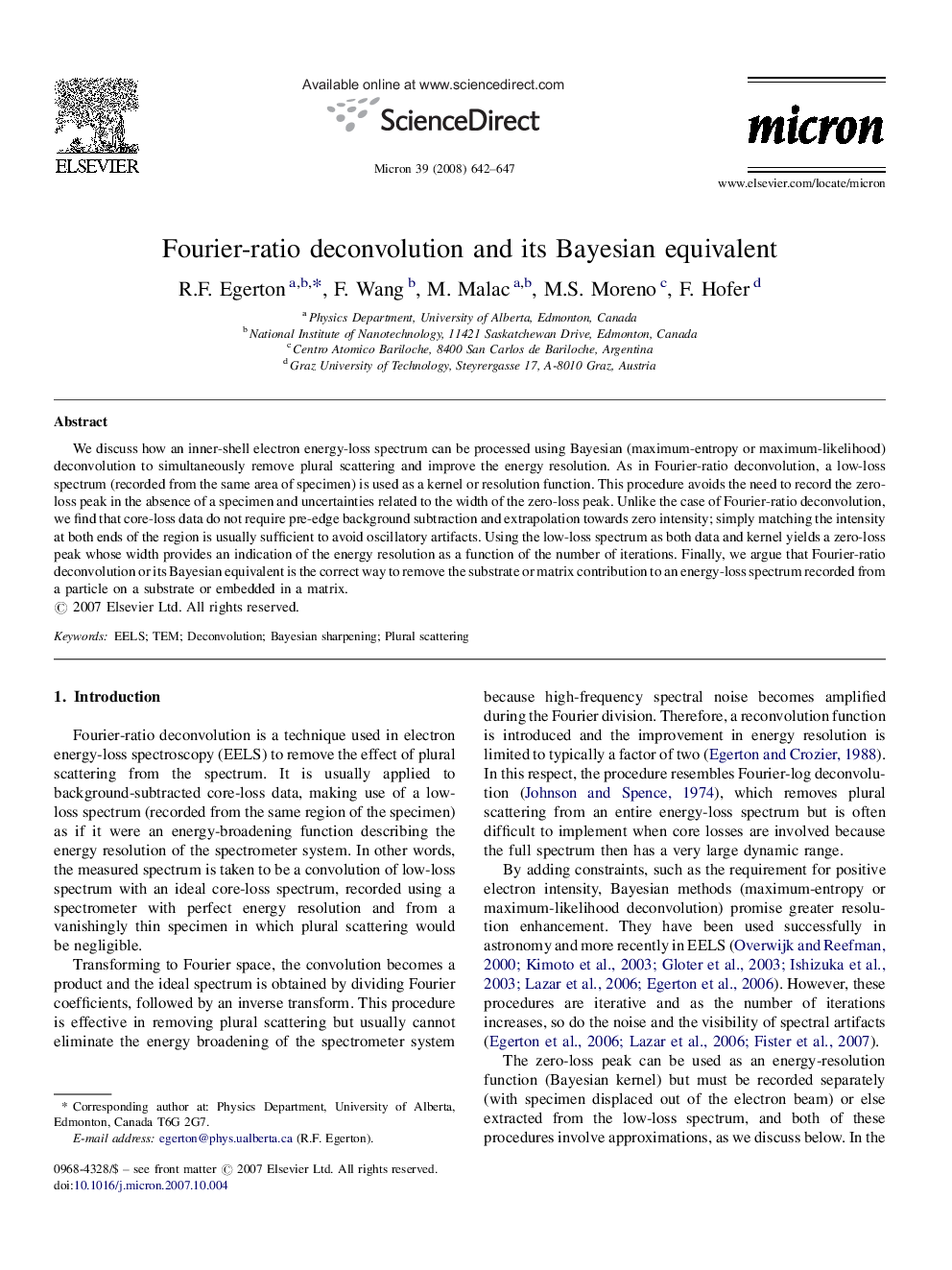| Article ID | Journal | Published Year | Pages | File Type |
|---|---|---|---|---|
| 1589949 | Micron | 2008 | 6 Pages |
Abstract
We discuss how an inner-shell electron energy-loss spectrum can be processed using Bayesian (maximum-entropy or maximum-likelihood) deconvolution to simultaneously remove plural scattering and improve the energy resolution. As in Fourier-ratio deconvolution, a low-loss spectrum (recorded from the same area of specimen) is used as a kernel or resolution function. This procedure avoids the need to record the zero-loss peak in the absence of a specimen and uncertainties related to the width of the zero-loss peak. Unlike the case of Fourier-ratio deconvolution, we find that core-loss data do not require pre-edge background subtraction and extrapolation towards zero intensity; simply matching the intensity at both ends of the region is usually sufficient to avoid oscillatory artifacts. Using the low-loss spectrum as both data and kernel yields a zero-loss peak whose width provides an indication of the energy resolution as a function of the number of iterations. Finally, we argue that Fourier-ratio deconvolution or its Bayesian equivalent is the correct way to remove the substrate or matrix contribution to an energy-loss spectrum recorded from a particle on a substrate or embedded in a matrix.
Related Topics
Physical Sciences and Engineering
Materials Science
Materials Science (General)
Authors
R.F. Egerton, F. Wang, M. Malac, M.S. Moreno, F. Hofer,
